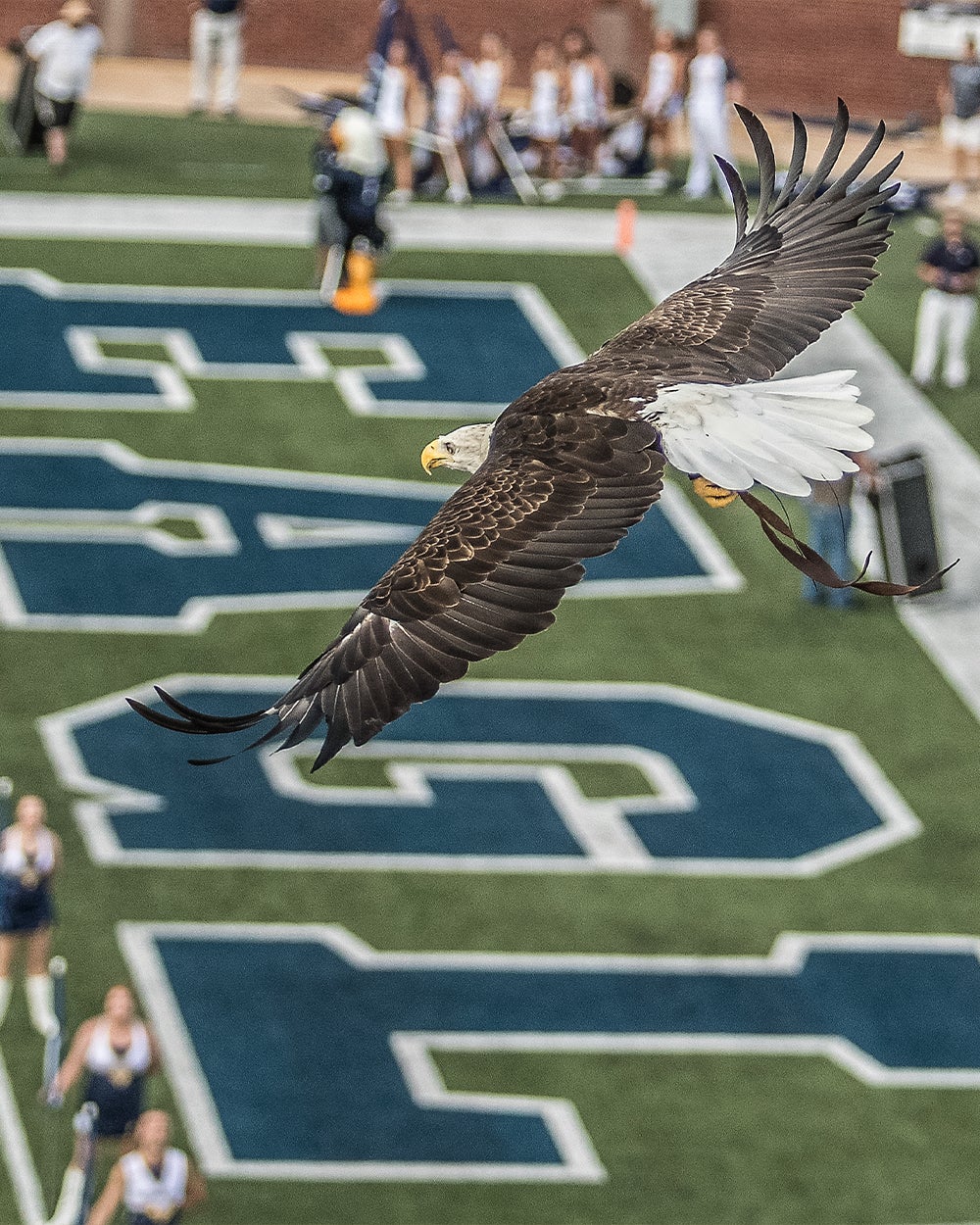Georgia Southern Research on the Coastal Plain
 Georgia Southern University is expanding research efforts in Georgia’s Coastal Plain region through an interdisciplinary research group that is driving innovative new programs, providing collaborations around the state and increasing education and outreach.
Georgia Southern University is expanding research efforts in Georgia’s Coastal Plain region through an interdisciplinary research group that is driving innovative new programs, providing collaborations around the state and increasing education and outreach.
The University’s Coastal Plain Science research group provides opportunities for students and faculty while addressing important community issues throughout the region in studies ranging from coastal hazards to water quality. The Georgia Coastal Plain is located south of the Fall Line that runs through Augusta, Milledgeville, Macon and Columbus, Ga. The area includes one-third of the salt marshes on the east coast and other natural resources, which researchers say are at risk due to population growth.
“Our goal is to establish Georgia Southern as a leader in research relevant to this region, and make us the go-to institution for coastal plain knowledge,” said biology professor Daniel Gleason, the team leader of the research group, which facilitates interaction among different colleges and departments. Faculty from the College of Science and Mathematics, the Jiann-Ping Hsu College of Public Health and the Allen E. Paulson College of Engineering and Information Technology are collaborating on studies aimed at maintaining and preserving a balance between continued development and the physical and biological resources of the region.
Gleason and his colleague Risa Cohen are conducting a study to determine where contaminants travel in local rivers and water systems. The goal of their EPA funded study is to examine how these contaminants affect marine biological communities offshore. Last spring, the researchers deposited 50 gallons of the non-toxic dye Rhodamine WT into the mouth of the Altamaha River and traced it 20 miles offshore to Gray’s Reef National Marine Sanctuary, a three-day process. “We are studying the connectivity between terrestrial, aquatic and marine systems,” said Gleason.
Civil engineering professor George Fu and biology professor Tiehang Wu, members of the research group, are collaborating on the development of a biological filter for water treatment. The purpose of their study, said Gleason, is to improve treatment methods for waters from local rivers, because the coastal plain region may have to rely on these rivers as a future drinking water source.
Georgia Southern’s coastal plain research also extends to the Applied Coastal Research Laboratory, located at the Skidaway Institute of Oceanography in Savannah, Ga. Clark Alexander, the lab’s director, said the facility is a place for University faculty and students to explore the dynamics of coastal environments. “The lab provides a home base for students and faculty conducting research on the coast, and also appeals to a wide range of disciplines. “A number of students have completed their undergraduate and graduate research working at this facility, studying for example, salt marsh restoration, patterns of crab larvae settlement during various times of the year, and other field-based research projects,” he continued.
Alexander’s own research includes a study determining the impact of dock construction on the salt marshes, specifically the large increase of docks built in the period from 1970 to 2000 on Wilmington Island in Savannah. In this study, Alexander found that the docks shade the marsh and attract and trap marsh wrack, which subsequently destroys marsh life and the habitats of juvenile shrimp, crabs and fish. In an effort to combat the destruction of marsh life, Alexander is researching alternative dock construction methods that may be used to prevent marsh wrack from becoming trapped.
“We know that people want to live along the coast and that coastal development is going to happen. We just want to inform the public, so construction can be completed in the most sustainable way possible,” he said.
Alexander revealed the newest research tool acquired by the lab is a bathymetric sonar that provides a view of habitats while mapping the ocean floor. “The bathymetric sonar will allow us to tell if the surface is rough, smooth or sandy, and we will begin by mapping Wassaw Sound,” he said. Alexander also mentioned that this tool will allow researchers to collect the first known data of Wassaw Sound, which would give them the capability of making decisions about habitats that need to be protected.
Additional ongoing studies through the lab include long term ecosystem research, mapping the elevation of salt marshes in an effort to develop better models for circulation in tidal creeks and documenting shoreline changes, hurricane tracking and developing other data for the Georgia Coastal Hazards Portal (gchp.skio.usg.edu).
Georgia Southern’s future in Coastal Plain research continues to rise with the establishment of the University’s new James H. Oliver Institute of Coastal Plain Sciences as well as the recently signed Memorandum of Understanding (MOU) with the U.S. Environmental Protection Agency (EPA). Research opportunities for students will explore alternative energy, water contamination and its impact on public health and a collaboration with the University’s Center for Sustainability.
Posted in Archive, Press Releases

